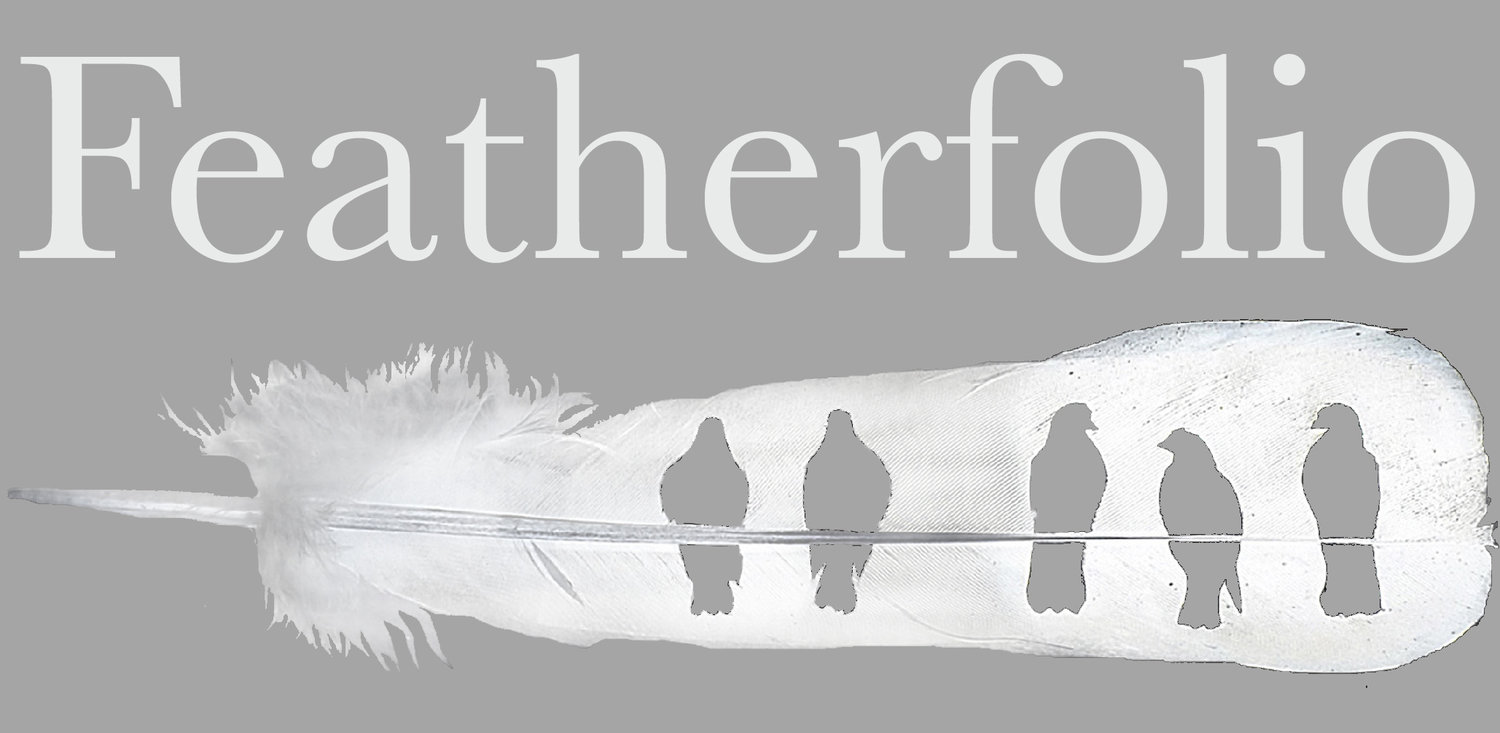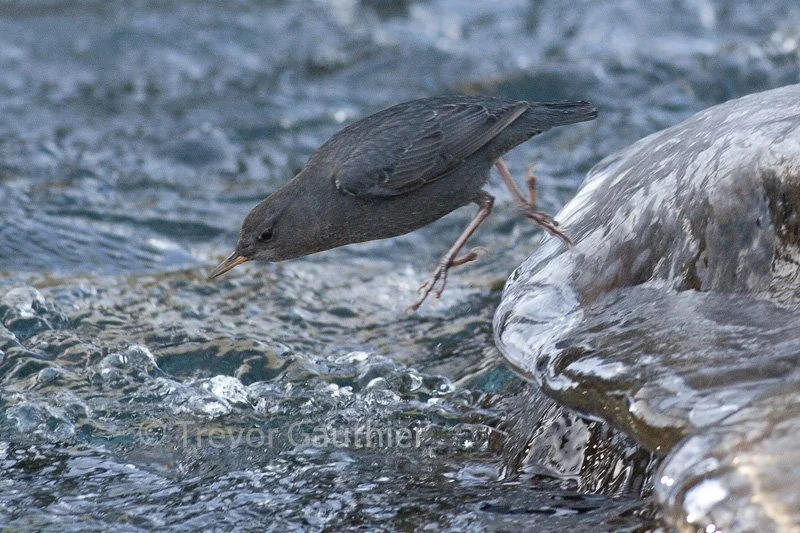The Big Dippers, 19 x 13 inches, consists of two Marabou Stork feathers
American Dipper, photo by Trevor Gauthier
When I took up whitewater kayaking this winter and Spring, I fell in love with the little bird of the rapids, the Dipper. I dressed for the river with insulation and an expensive drysuit while the dipper slipped in and under and out of the water with just its feathers to keep dry and insulated. So I read up on it and learned some fascinating facts.
A previous blog of mine described about how a bumpy feather surface microsculpture repels water through surface tension (envision an ant falling on the water and just floating instead of sinking). Ducks and other water-birds tend to have bumpier microsurfaces on the vanes of their feathers. I imagine that the dipper’s feathers are on par with duck’s in this regard. To further reduce water penetration, especially under pressure as the bird goes deeper underwater, the barbs on the vanes of each feather are spaced closer together (in combination with the barb’s diameter) than non-water birds.
Other ways Dippers keep warm and dry are that their bodies produce more surface oil and more feathers. The oil, that they spread around with their beaks, might keep them warmer in the cold waters. I used to assume that the oil was to waterproof the feathers, but no, not so much. It is more like a feather and skin conditioner. Also, they grow twice the number of feathers as a similar sized songbird, like the Robin for instance, which translates somewhat to having more feathers in your down coat to keep you warm.
Like songbirds, Dippers grow new feathers yearly and shed the old ones. Unlike other songbirds that shed their feathers a few at a time so they can keep flying, the Dipper sheds its feathers all at once, like ducks. They grow back in a couple of weeks.
And the Dipper is the only bird that I have ever heard of that actually has feathers growing on its eyelids. When they blink and these white feathers show, it looks like their eyeballs turn them ghostly.
Keep an eye out for these birds if you are on a clean and fast western North American river. Also, keep an eye out for me floating by in my kayak.
Rigke & Jesser, The Feather Structure of Dippers


